Occupational environment monitoring at a sugar manufacturing factory
99,000 ₫
Note: The above price is calculated for one sample, and the price may fluctuate depending on the area of the environment to be monitored and market movements. For more accurate pricing support, please refer to the price list or contact our consulting staff directly.
Monitoring the environment of a sugar production factory is a session of collecting, analyzing, and evaluating workplace factors that may be harmful to workers health.
Table of Contents
Toggle1. Overview of Sugar Production Factories
a. What is a sugar production factory?
Factory producing sugar is a production facility specialized in processing sugarcane or sugar beet into sugar. The sugar production process includes multiple stages, from raw material handling to refining, crystallization, and packaging sugar into final products.

b. Production stages in a sugar production factory
The production stages in a sugar production factory include:
- Raw material receiving: Sugarcane or sugar beet is received from agricultural suppliers. The raw materials are quality-checked and prepared to start the processing.
- Raw material processing: Sugarcane or sugar beet is processed to extract juice from the plants.
- Refining: The extracted juice is distilled to remove sediments and achieve the required refinement quality. This refining process may include several steps such as distillation, filtration, cleaning, and concentration.
- Crystallization: After refining, the sugar solution is cleaned and crystallized. This process involves forming sugar crystals from the liquid, drying, and solidifying.
- Packaging: The crystallized sugar is packaged into appropriate containers. Packaging includes steps such as bagging, boxing, or other containers according to safety and hygiene standards.
- Quality inspection: Before final packaging, sugar is inspected to ensure compliance with standards for purity, fineness, and flavor.
- Storage and transportation: After quality inspection, sugar is stored in warehouses and transported to retail points or customers as requested.

c. Machinery used in sugar production factories
In a sugar production factory, various machines and equipment are used for different production stages. Commonly used machinery includes:
- Cane cutting machine: Used to cut sugarcane into small pieces for further processing.
- Cane grinding machine: Used to crush sugarcane into smaller pieces to extract juice.
- Cane press: Used to press sugarcane and extract juice.
- Filtration machine: Used to filter out sediments and impurities from the juice after processing.
- Distillation machine: Used in the refining process to distill juice and produce pure sugar.
- Cleaning machine: Used to remove sediments and impurities from the juice after distillation.
- Crystallization machine: Used to dry and form sugar crystals from the sugar solution.
- Packaging machine: Used to package sugar into bags, boxes, or appropriate containers.
- Quality inspection machine: Used to check quality factors such as purity, fineness, moisture content, and flavor.
- Transportation and storage systems: Machinery for transporting, storing, and managing sugar during and after production.

d. Occupational diseases for workers in sugar production factories
Workers in sugar production factories may encounter several occupational diseases due to workplace environment and production processes. Common occupational diseases include:
- Respiratory diseases: Workers may be affected by sugarcane dust, cane vapors, or chemical fumes during sugar processing, leading to bronchitis, asthma, pneumonia, and related respiratory problems.
- Skin diseases: Prolonged exposure to chemicals and irritants may cause skin issues such as dermatitis, skin allergies, eczema, folliculitis, and blocked hair follicles.
- Eye diseases: Exposure to cane dust or other irritants may lead to eye problems such as conjunctivitis, immune inflammation, and vision loss.
- Ear diseases: High-intensity noise during sugar production can cause hearing loss or other ear-related issues.
- Digestive diseases: Exposure to harmful substances during sugar production may result in digestive issues such as enteritis, diarrhea, nausea, and vomiting.
- Nervous system diseases: Exposure to chemical compounds may cause nervous system problems such as dizziness, headaches, insomnia, and stress.

e. Common types of sugar on the market
There are many common types of sugar on the market, including:
- White sugar: The most common type used widely in cooking and baking. White sugar has fine grains, pure white color, and sweet taste.
- Brown sugar: Produced from molasses or cane syrup. Brown sugar is brown and has a stronger flavor than white sugar. Types include natural brown sugar and peanut brown sugar.
- Granulated sugar: Fine-grain sugar with pure white color and smaller particle size than regular white sugar. Often used for cake decoration and candies.
- Fine sugar: Small, uniform grains, used for cake decoration, candies, and some desserts.
- Coarse sugar: Larger grains than fine sugar, used for decorative purposes and visual accent.
- Nonpareil sugar: Very small bead-like grains, used for cake decoration and candy-making.
- Sugar syrup: Small grains that dissolve quickly in water, used in beverages, preserved fruits, and sweetened drinks.
2. Overview of occupational environment monitoring services
a. What is occupational environment monitoring in sugar production factories?
Occupational environment monitoring (or workplace environment measurement) in sugar production factories involves collecting, evaluating, and analyzing workplace environmental factors to take timely measures, minimize environmental harm to workers’ health, and prevent occupational diseases. Occupational environment monitoring is mandatory for sugar production factories.
This monitoring is critical for caring for, protecting, and enhancing workers’ health because workers are the main resource of the enterprise and directly generate profit. Regular exposure to risk factors above permissible limits can adversely affect workers’ health and cause occupational diseases.
REGISTER FOR OCCUPATIONAL ENVIRONMENT MONITORING SERVICE
b. Nam Viet’s occupational environment monitoring program
Nam Viet’s occupational environment monitoring program is developed by engineers specializing in labor safety and environmental protection. To ensure worker health and safety, the program uses modern measurement methods to monitor air, water, microclimate, physical factors, dust, and other workplace conditions. This program is essential for maintaining a safe working environment and protecting workers’ health.
Additionally, the program also contributes to researching and developing solutions to improve workplace environmental quality. With the dedication and professionalism of monitoring experts, Nam Viet’s exclusive program represents a breakthrough in labor safety and environmental management in Vietnam.

c. Standardization in occupational environment measurement processes
Standardization in Nam Viet’s measurement process is crucial to ensure measurement accuracy and reliability. The program follows recognized standards and procedures of Ho Chi Minh City Department of Health. This ensures that collected data is highly reliable for evaluating workplace environments and making informed decisions to improve working conditions and protect workers’ health.
Standardized processes are performed by experienced monitoring specialists, enabling managers and experts to trust results from An Toan Nam Viet and make accurate, valuable decisions in occupational health and environmental protection.
By applying standardization, Nam Viet demonstrates its commitment to ensuring safe workplaces, protecting workers’ health, and contributing positively to labor safety and environmental management in Vietnam.
d. Reporting occupational environment monitoring results in sugar factories
Monitoring results are prepared according to Form 04, Appendix III, issued with Decree 44/2016/ND-CP in two copies: one sent to the contracting labor facility, and one retained by the monitoring organization.
According to law, the retention period of monitoring results is indefinite.

e. Frequency of occupational environment monitoring according to law
According to clause 2 of Article 18, Law on Occupational Safety and Hygiene 84/2015/QH13, employers must conduct occupational environment monitoring at least once a year.
f. Deadline for submitting occupational environment monitoring reports according to law
The deadline for submission is before December 31 each year. Enterprises in production facilities must submit monitoring results to the Department of Health where the facility is located.
When there are changes in technology, production processes, or facility upgrades that may generate new hazardous factors affecting worker health, enterprises must update occupational hygiene records regarding harmful factors requiring monitoring.
g. Penalties for violations of occupational environment monitoring by employers
According to Article 27 of Decree No. 12/2022/ND-CP dated 17/01/2022 on administrative penalties in labor, social insurance, and Vietnamese workers working abroad under contracts:
- Clause 2: A fine of VND 2,000,000 – 5,000,000 for employers who do not publicly inform workers at monitoring sites immediately after obtaining monitoring results and hazard assessments.
- Clause 3: A fine of VND 20,000,000 – 40,000,000 for employers who fail to conduct occupational environment monitoring to control health hazards as required by law.
- Clause 4: A fine of VND 40,000,000 – 60,000,000 for employers who collude with monitoring organizations to commit fraud in monitoring activities without reaching criminal liability.
3. Harmful Environmental Factors for Workers in Sugar Factories
In sugar factories, workers may be exposed to harmful environmental factors such as:
- Dust: The production of sugar may generate dust from raw materials such as sugarcane, sugar beet, or fuel ash. Dust can irritate the respiratory system and cause health problems such as pneumonia, coughing, and difficulty breathing.
- Vapors and toxic gases: During sugar processing, vapors and toxic gases may be generated, such as heat-generated fumes, industrial gases, and vapors from chemicals used in production. Long-term exposure to these vapors and gases can affect the nervous system, respiratory system, cardiovascular system, and liver.
- Temperature and humidity: The working environment in sugar factories may have high temperatures due to processing and high humidity levels. Prolonged exposure to unsuitable temperature and humidity can cause fatigue, exhaustion, body temperature disorders, and dehydration.
- Noise: Machinery and equipment in sugar factories can produce high noise levels. Continuous high noise exposure can cause stress, hearing problems, and affect overall health.
- Chemicals: During sugar production, processing agents, cleaning agents, colorants, and preservatives may be used. Improper or long-term exposure to these chemicals can cause skin irritation, infections, respiratory issues, and digestive system problems.
REGISTER FOR OCCUPATIONAL ENVIRONMENT MONITORING SERVICE
4. Measures to Improve the Working Environment in Sugar Factories
To improve the working environment in sugar factories and protect workers’ health, the following measures can be implemented:
- Ventilation and fume extraction: Install effective ventilation and fume extraction systems to reduce dust and toxic vapors in the workspace. Ensure regular maintenance and cleaning of the systems.
- Electrical safety: Regularly inspect and maintain electrical equipment to ensure safe operation and prevent fire hazards.
- Provide protective equipment: Ensure workers are provided with full personal protective equipment such as masks, safety glasses, gloves, protective clothing, and safety shoes to protect against dust, toxic vapors, and noise.
- Training and education: Provide occupational safety training, proper PPE usage, and safe work procedures. Raise awareness of occupational hazards and preventive measures.
- Periodic health check-ups: Organize regular health examinations for workers to detect early job-related health problems and apply preventive measures in time.
- Waste management: Ensure safe waste management procedures, handle waste according to regulations, and minimize exposure to hazardous waste.
- Adjust the working environment: Regulate temperature and humidity in the factory to create a comfortable working environment for workers. Provide adequate natural and artificial lighting.
- Regularly conduct occupational environment monitoring in the factory, collect and analyze harmful factors affecting workers, and implement adjustments to reduce hazards and prevent occupational diseases.
5. Benefits of Periodic Sugar Factory Environment Monitoring
An Toan Nam Viet provides businesses with excellent benefits when using occupational environment monitoring services according to Decree 44/2016/NĐ – CP on the management and control of harmful factors in the working environment affecting workers.
- Businesses can proactively control harmful factors in workshops or factories.
- Receive recommendations to reduce harmful factors and improve workplace environmental quality.
- Indirectly protect human resources, the key factor in business development.
- Reduce the impact of occupational diseases on workers’ health, minimizing future medical costs.
- Improved worker health leads to better product quality and ensures consistent production output.
- Comply with labor safety regulations and avoid legal risks.
- Enhance credibility and professionalism, elevating the company’s brand.
An Toan Nam Viet’s environment monitoring service is a solution to reduce occupational disease risks, contributing to a clean and high-quality working environment.

6. Nationwide Occupational Environment Monitoring Center
An Toan Nam Viet Occupational Environment Monitoring Center is a professional unit for supervising and measuring occupational environment quality across all provinces in Vietnam. With experienced monitoring specialists, the center uses modern measuring equipment to ensure accuracy and reliability.
In addition to monitoring services, the center supports clients in planning, handling, and tracking occupational environment issues. With the motto “customer-centric,” the center prioritizes customer satisfaction and provides optimal solutions for businesses.
REGISTER FOR OCCUPATIONAL ENVIRONMENT MONITORING SERVICE
With investments in technology, equipment, and workforce, An Toan Nam Viet’s monitoring center has become a reputable unit in occupational environment monitoring in Ho Chi Minh City with the following objectives:
- We value our brand reputation and service quality.
- We provide clients with the best and most suitable solutions.
- Alongside experienced Masters and Engineers, aiming to protect the environment and benefit businesses.
- Clients using An Toan Nam Viet monitoring services receive professional support from experts and the best cost advantages.
The occupational environment monitoring process at An Toan Nam Viet includes the following steps:
- Before monitoring, ensure all equipment is calibrated according to legal regulations.
- Follow the committed occupational environment monitoring procedures with the Department of Health.
- Report monitoring results truthfully to employers.
- If results indicate unsafe conditions, An Toan Nam Viet will support remediation measures and the workplace will:
- Implement measures to improve working conditions, minimizing harmful factor exposure and preventing occupational diseases.
- Organize health check-ups to detect occupational diseases early for workers in unsafe positions.
- Provide material compensation to workers according to labor law regulations.

7. Occupational Environment Monitoring Pricing
To help businesses conduct professional and effective occupational environment monitoring, An Toan Nam Viet provides a detailed price list for monitoring services with quality and reasonable costs.
- Our price list provides detailed information on all monitoring services offered, including costs for travel, measurement, analysis, and reporting. Clients can trust the accuracy and reliability of our monitoring reports.
- We commit to offering competitive and reasonable prices, while providing fast and professional consultation for all monitoring service inquiries.
- With An Toan Nam Viet’s monitoring price list, clients can easily select service packages suitable for their needs, ensuring maximum satisfaction with professional service quality.
No comments yet

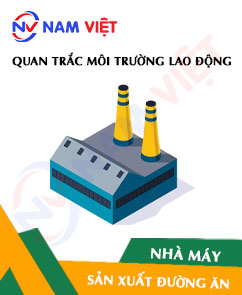
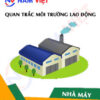
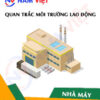

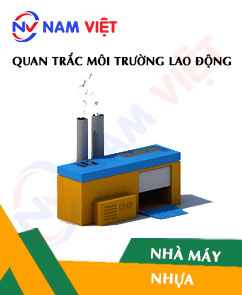
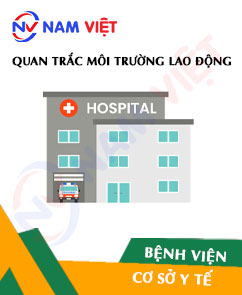


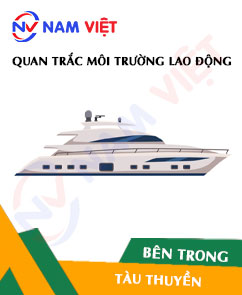
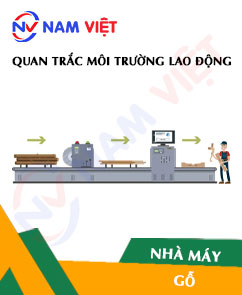

Review Occupational environment monitoring at a sugar manufacturing factory
There are no reviews yet.